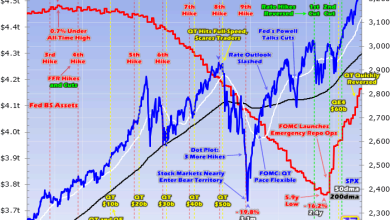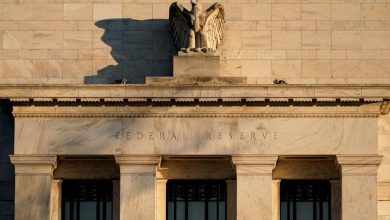All that COVID aid included $366 billion for the wealthy

Congress is getting better at heading off devastating recessions. Yet the gusher of stimulus money Congress provided to offset the COVID recession during the last two years included hundreds of billions of dollars for wealthy Americans, with little benefit to the ordinary workers the money was supposed to help.
New research by MIT economist David Autor and nine others finds that the Paycheck Protection Program, an $800 billion aid package Congress passed in March 2020, was one of the costliest but least effective Congressional efforts to combat the COVID recession. The PPP was supposed to help workers by keeping their employers afloat. Low-interest loans were available to nearly every U.S. business with 500 workers or fewer. The money was for keeping workers on the payroll, hiring back laid-off workers and otherwise keeping the lights on. Most of those loans are likely to be forgiven under terms Congress established when it passed the program.
The PPP did help hasten the end of the COVID recession in 2020. The Autor research found that the program preserved nearly 3 million jobs in the second quarter of 2020 and a smaller number of jobs in ensuing quarters. It also aided the financial system by allowing smaller businesses to continue making payments for mortgages, equipment and supplies.
A remarkably open program
But the Autor research also found that “the distribution of Paycheck Protection Program loans overwhelmingly accrued to high-income households.” That’s because the money went principally to business owners and shareholders, who tend to be wealthy. Some of that money made its way to workers, but much of it didn’t, an outcome that could change the way Congress structures fiscal stimulus in the future.
[Get Rick Newman’s stories by email or follow him on Twitter.]
The Autor research traced $510 billion in PPP loans the government issued in 2020, and found that only $144 billion made its way to the bottom 80% of earners. That left $366 billion going to the top 20% of earners. That doesn’t mean wealthy Americans got taxpayer cash they could use to buy boats or beach houses or spend any way they want. Instead, those funds preserved and boosted the value of ownership stakes in businesses. Even that was probably good for the U.S. economy. It’s just not the “paycheck protection” the law promised.
There were two other huge COVID relief programs — stimulus checks that went to most U.S. families, and federal jobless aid that supplemented state unemployment benefits. Those were more effective at reaching lower-income Americans who needed the help most. The vast majority of the money from those two programs went to the bottom 80% of earners, and much of it went to the bottom 40%.
Stimulus checks and expanded jobless aid are standard forms of fiscal aid Congress has relied on before. The PPP was more novel. Unlike most recessions, which materialize gradually, the 2020 downturn was an abrupt shock with a single cause — the COVID virus. As businesses shut down temporarily and consumers huddled at home, the unemployment rate soared from 3.5% to 14.8% in a mere two months. The goal of the PPP was to keep businesses afloat until the economy recovered, and prevent a wave of bankruptcies that could stress the credit system and turn an economic crisis into a financial one.
The urgency of the problem led to a remarkably generous PPP program. Virtually any business below the size threshold could get a loan, without having to show any financial need whatsoever. That changed when Congress approved a third round of PPP loans for 2021. At that point, any firm taking out a second PPP loan needed to show it had a financial need for the money.
A tradeoff for getting money into the economy quickly
The tradeoff for injecting tons of money into the economy rapidly was that the money was untargeted and didn’t necessarily go to those who needed it most. A 2021 study by the Dallas Federal Reserve, for instance, found that some parts of the country where workers suffered the most during the early weeks of the COVID pandemic got relatively small amounts of PPP aid. One reason is that banks administered the loans and tended to arrange them first with businesses they already served. Businesses without an existing banking relationship might have desperately needed a loan, but might also have been at the back of the line.
Still, the Dallas Fed found that PPP did aid the labor market recovery, calling the program “a qualified success.” In at least one way it was definitively better than the “back door bailouts” the Federal Reserve and other banking regulators executed during the financial crisis of 2008 and 2009. In some instances, financial firms in no danger of failing got billions of dollars in aid through loopholes, effectively swallowing taxpayer money without explicit authorization by Congress. That made a multi-pronged rescue plan meant to prevent widespread bank runs look like corporate welfare, at a time when unemployment, foreclosures and bankruptcies were surging. Outrage ensued, undermining support for an ugly rescue that was nonetheless necessary.
The 2008 and 2009 bailouts stabilized hundreds of big companies in the hope that would keep workers employed. But there was no requirement that businesses protect jobs. The PPP was supposed to improve on that by linking federal aid directly to worker protection. Yet the latest data suggests there’s still a long way to go. If another recession calls for such aid, Congress may target it more carefully at the neediest businesses from the outset.
The Autor research also points out that high-income nations in Europe and elsewhere have “work sharing” or wage subsidy programs that give federal authorities more flexibility when doling out aid during a downturn. The U.S. system relies on unemployment insurance to help workers who lose their jobs, whereas other systems are meant to keep workers on the payroll, even if they work or earn less while the economy shrinks. That keeps workers connected with employers, enabling a smoother road back as the economy recovers. If the U.S. had such a system, it would also make it easier to subsidize workers directly, instead of counting on business owners to do it. Maybe during some future recession.
Rick Newman is a columnist and author of four books, including “Rebounders: How Winners Pivot from Setback to Success.” Follow him on Twitter: @rickjnewman. You can also send confidential tips.
Read the latest financial and business news from Yahoo Finance
Buka akaun dagangan patuh syariah anda di Weltrade.
Source link





